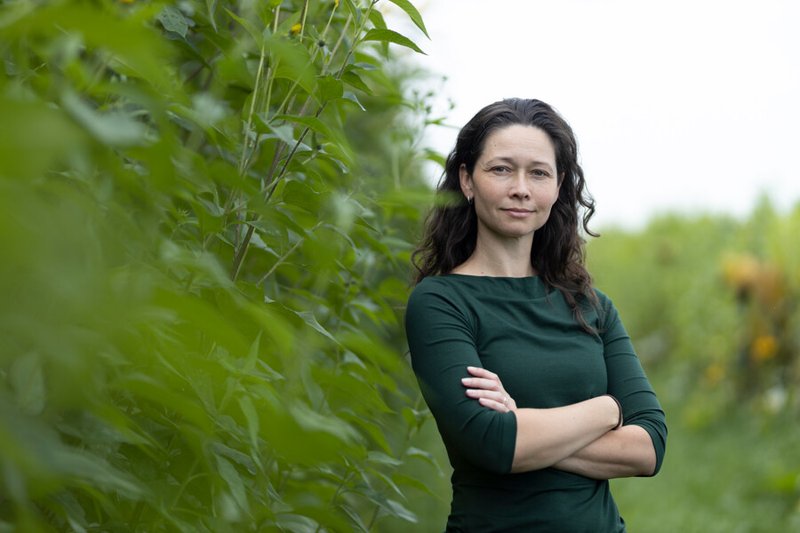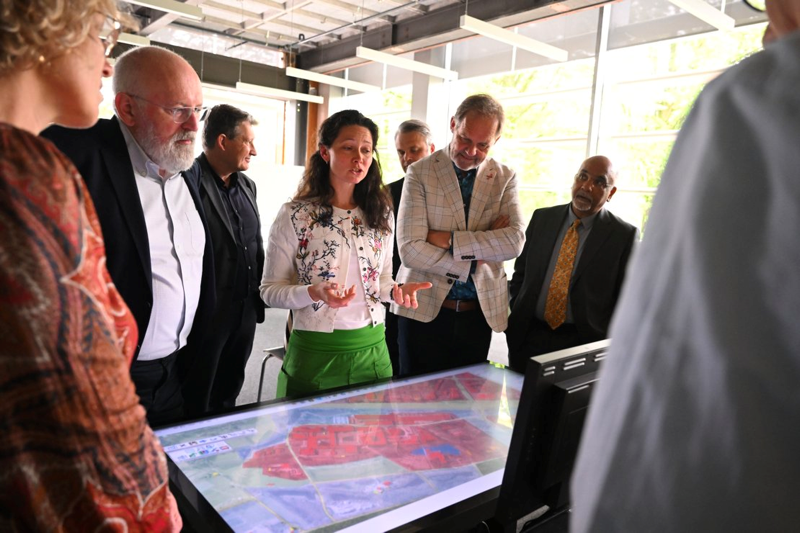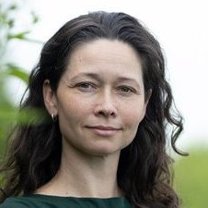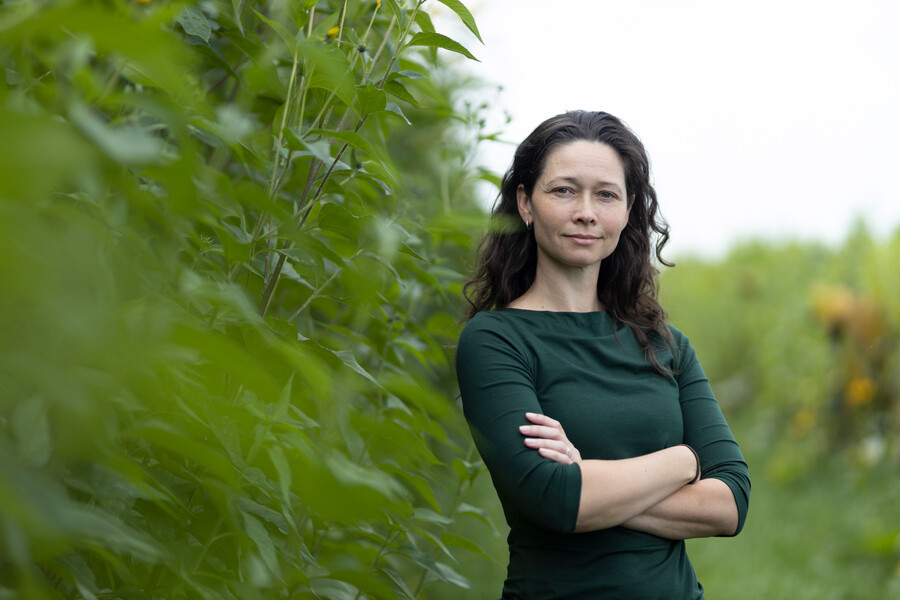Meet our Energizer! Cheryl de Boer
Cheryl de Boer is originally from Canada, but has Dutch origins, having Frisian grandparents who moved to Canada. After working as an engineer in manufacturing at Siemens Westinghouse, Cheryl came to the Netherlands to pursue a PhD at the University of Twente in the field of governance and sustainability of water management, career-wise a move towards policy development.
Following the completion of her PhD, Cheryl continued with a four-year postdoc position. During this project Cheryl became more involved in topics surrounding the energy transition. In addition, it became clear that her work was more spatially oriented. For this reason, she made an internal move to another faculty, where she is able to work with spatial geo-information for policy development together with colleagues who focus on developing spatial tools and data.
At this moment, Cheryl is newly appointed in the role of strategic director of the Climate Centre at the University of Twente. Additionally, she holds the position of associate professor at the department of Urban and Regional Planning and Geo-Information Management within ITC.

Cheryl de Boer - photo by S. Onrust
Spatial information and decision-making for the energy transition
Spatial planning and the energy transition are deeply interconnected. Think of land use and energy infrastructure, urban areas and energy efficiency, renewable energy integration and spatial planning for resiliency and climate adaptation. Spatial planning is key in the planning of wind and solar farms, for reducing the need for transportation in cities, and to integrate renewable energy sources into the energy grid.
Cheryl says: “A lot of (but not all) issues in the energy transition are spatially oriented. However, more connections need to be made to social behaviour, governance, and social awareness. My aim is to co-design decision-supporting and planning tools that include these aspects to address the reception to renewable energy sources in society. What I would like to see is that we will be able to move the dial from Nimby (‘Not in my back yard’) to Yimby (‘Yes in my back yard’). Social acceptance of renewable energy structures is very important for advancing with the energy transition.”
Cheryl highlights the challenges in transitioning to new technologies, emphasizing that the main issues are related to societal awareness and acceptance rather than the technologies themselves. Take for example the processes surrounding the development of wind farm projects. She points out that wind turbines are not always the best solution and that the lack of consideration for how to use the surroundings effectively leads to legal and other obstacles. Therefore, Cheryl suggests that planning tools, which incorporates relationships between spatial, technical and societal information, could improve understanding and facilitate pragmatic discussions. These tools can help bridge the gap between factual and perceived information, making discussions more concrete and contextual, ultimately aiding in decision-making and reducing discrepancies.
Transparent choices in the process of designing a tool
“In the process of making a spatial map, by definition you make choices and bring in biases.” says Cheryl. “We are very aware of this and that is why, we try to be as transparent as possible in making choices. We make clear choices in what to show and what not to show. For example, in simplifying the information in a map used to discuss choices within the energy transition, we must decide whether or not to include biomass and other elements in the energy transition. Ideally, we make these choices based on interviews and decide based on these which are the most important factors. Our research focuses on what makes people better informed and what the hindrances are to these choices.”
Collage has been one tool that was developed by Cheryl and her colleagues. Cheryl: “It’s quite a popular tool, as it addresses key gaps in the energy transition. The discussion of how to develop these kinds of tools always takes place within certain boundaries, for example when we worked together with Vitens* recently, on a tool focused on water allocation. We started this collaboration by exploring what it is we are trying to understand better, what is important in the decision process and how does that translate to concrete aspects in the tool, such as the choice of buttons.”

Frans Timmermans, vice-president of the European Commission, visits the newly launched UT Climate Centre, May 2023. Photo: University of Twente.
How to maintain a healthy balance when working interdisciplinarily
While focusing on the social side of spatial planning, Cheryl has a typical engineering approach to her work: “I am solution-oriented and interested in finding answers to how do we solve complex challenges in an urban environment.”
Cheryl combines her role as director with research and educational activities and is committed to maintaining a better balance in the future. In her work, she recognises that her multifaceted experience is very valuable. Cheryl: “We don’t spend enough time recognizing how to do interdisciplinary research well. There are a lot of difficulties in connecting engineering and policy development work. This takes time and that should be recognized, and this is what I strive for as the director of UT’s Climate Centre.”
As she explains her work and her approach, Cheryl draws parallels with sports. As an experienced Frisbee player, Cheryl says that during the game, you have to decide what is fair play. You have to make quick decisions as you go, be physically active and mentally present. These sport experiences are important to keep a healthy balance and are a resource to draw on in the work that she does.
Understanding policy and technology choices to advance the energy transition
Cheryl continues by saying: “In my personal opinion, in addition to more attention for the time it takes to do interdisciplinary research well, I see a disconnect between addressing the short-term issues in the energy transition and the long-term issues. In a drive to green up our energy supply, we did a great job in building renewable energy production. However, we failed to address the long-term issues with the energy grid, energy use and spatial planning in that regard. I think we can do a better job and interdisciplinary work is worth the effort!
Recognizing the time constraints involved, sharing experiences and building expertise are crucial for collaborating effectively to achieve the goals of the energy transition. Cheryl says: “Members of the 4TU.Energy community face difficult decisions too, and by exchanging decision-making experiences, we can significantly support one another.”
The transition of energy systems and societal change are intrinsically linked to technological development. Greater engagement from technologists is essential, as energy efficiency does not mean we can continuously increase our energy consumption. A deeper understanding of societal impacts is necessary. And vice versa, we must also improve our knowledge of how technological choices are made, as not all technological decisions are equal. Last but not least, the consequences of policy choices must be considered to carry on moving in the right direction. Therefore, let’s work together, engage with each other and gain a better understanding of what each of us is working on!
More about Cheryl
*Vitens is a Dutch water utility company headquartered in Zwolle.

